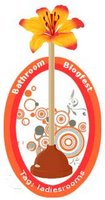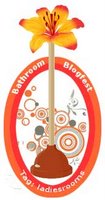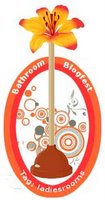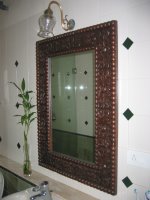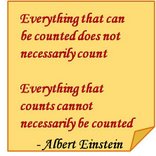In case you are wondering why I am saying all this - I am taking off from C.B's post here. She posted an interesting thought about how the 'game of tags' in the virtual world could be put to use in the real world to enhance customer experience. She writes...
The whole concept of 'blog tag' reminds me that often the hardest part of developing a relationship with customers is that initial point of connection. So, imagine enabling that connection through a non-virtual version of 'blog tag'... Think of hotels where the concierge and others wear nametags showing both city of origin and name. Don't your eyes gravitate to that information? And, don't you start a conversation with that person relating to that info?
4H5-ZPTO
Whenever I am asked which mobile handset i use, I say 'Nokia'. Even while i say it, i can anticipate the next question. Which model? And i have to reluctantly say 'I don't know'. The conversation does not end there, but it suffices to say that no matter how hard i try, I cannot for the life of me remember alpha numeric codes. It is for the same reason that communication for hardware / electronics - that reel out such numbers - does not resonate with me.
Vin Cuit
Ever been to a restaurant, where instead of telling the person taking your order what you'd like, you've had to point a finger to the menu since you were too embarrassed to pronounce. Worse still ever had an experience where instead of deciding what you'd like to eat, you stare at the strange words on the menu with the alphabets rolling in front of your eyes. Names that are originally linked to a cuisine do have a ring of authenticity, though the customer could have the an unpleasant experience with the words rolling over his tongue.
Of Scandinavian lakes & Swedish Islands
Ever bought garden furniture or bathroom accessories that were named after lakes and islands. You probably have except that it hasn't clicked that funny looking jumble of words on your IKEA products actually meant something! People who buy IKEA do so for the design elements and affordability and a product name would not deter them from their purchase decision - but it does leave consumers wondering, gives them no context to the product name and in some cases even causes inconvenience.
Where do the 'dots' go
My last thought on the subject is on del.icio.us and i still don't know whether i have got the dots in the right place and frankly, it does not matter any more since if you did type just 'delicious' - it would take you to their site, but once upon a time it did not and one had to take the trouble to remember. Fortunately for them, they recognized this and made the corrections early on!
but...Marketers do!
(In what and how their brands / products are named)
Ref
Where i first read about the trouble with the delicious name - the delicious tax
A two part article decoding the mystery behind the IKEA product names - Part 1, 2
What to watch out for while considering brand / product names - here and here
brand names,product names,IKEA,del.icio.us,




